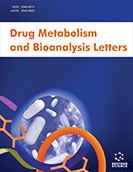
Abstract
Background: Humans have a long history of the uses of plant based products, including extracts and pure phytoconstituents for the treatment of human diseases in the different system of medicine. In the developing countries, phytoproducts play an important role in the healthcare systems due to their medicinal importance and pharmacological activities. Flavonoids class phytochemicals are beneficial for human beings because of their free radical scavenging properties and trace metals chelating potential. Flavonoids have inhibitory potential for the growth of bacteria and virus mainly through enzyme inhibition functions and viral translation. Rhamnocitrin is also called 7- methyl-kaempferol is important flavonoids, which has been isolated from different medicinal plants and has pharmacological activities in the medicine.
Methods: Present paper describes the biological potential and health beneficial aspects of rhamnocitrin in the medicine through the data analysis of published papers in the recent years in the field of medicine and modern medical sciences. Scientific data on rhamnocitrin have been collected from electronic databases such as PubMed, Google Scholar, Google, Scopus and Science Direct in the present investigation and analyzed to know the biological importance and pharmacological activities of rhamnocitrin. Pharmacological scientific data of rhamnocitrin have been collected and analyzed in the present work with their analytical aspects.
Results: Literature data analysis of different scientific work on rhamnocitrin revealed the biological importance of rhamnocitrin in medicine. Rhamnocitrin is known to be a promising phytoconstituents found to be present in medicinal plants with a wide range of biological activities. Rhamnocitrin was found to have pharmacological activities, including anti-atherogenic, anti-oxidant, anti-cancer, anti-bacterial, anti-inflammatory, enzymatic and neuroprotective potential. Further biological effect of rhamnocitrin on adipocyte differentiation has been also studied in the present work. Analytical data on rhamnocitrin signified the application of different analytical techniques for the separation, isolation and identification of rhamnocitrin in medicine.
Conclusion: Literature data analysis of different scientific research works revealed the biological importance and therapeutic benefit of rhamnocitrin in medicine.
Keywords: Rhamnocitrin, flavonoid, anti-atherogenic, anti-oxidant, anti-cancer, anti-bacterial, anti-inflammatory, enzymatic, neuroprotective.
Graphical Abstract
[http://dx.doi.org/10.1016/j.bjp.2018.03.006]
[http://dx.doi.org/10.1007/s11655-014-1960-x] [PMID: 25501296]
[http://dx.doi.org/10.2174/1573407217666210824125427]
[http://dx.doi.org/10.2174/1871530321666210108122924] [PMID: 33423654]
[http://dx.doi.org/10.1016/j.gpb.2020.06.002] [PMID: 33157301]
[http://dx.doi.org/10.2174/1872312814666210726112910] [PMID: 34313205]
[http://dx.doi.org/10.1016/j.jksus.2020.02.028]
[http://dx.doi.org/10.1016/j.jtcme.2016.11.003] [PMID: 28725632]
[http://dx.doi.org/10.1016/j.bjbas.2017.05.009]
[http://dx.doi.org/10.2174/2215083804666180416124949]
[http://dx.doi.org/10.1016/j.ejbas.2018.09.002]
[http://dx.doi.org/10.1074/jbc.RA119.007808] [PMID: 30944172]
[http://dx.doi.org/10.1007/s11655-013-1595-3] [PMID: 24092244]
[http://dx.doi.org/10.1016/j.jksus.2018.12.006]
[http://dx.doi.org/10.1016/j.jff.2020.104076]
[http://dx.doi.org/10.1021/jf0717788] [PMID: 17973448]
[http://dx.doi.org/10.1016/j.bioorg.2018.10.051] [PMID: 30396116]
[http://dx.doi.org/10.1016/j.taap.2009.02.014] [PMID: 19265714]
[http://dx.doi.org/10.1016/j.fct.2011.02.011] [PMID: 21338653]
[http://dx.doi.org/10.1080/14786410701875686] [PMID: 19085423]
[http://dx.doi.org/10.1007/s11010-013-1792-6] [PMID: 24026428]
[http://dx.doi.org/10.1007/s13197-017-2902-3] [PMID: 29184237]
[http://dx.doi.org/10.1111/j.1365-2184.2011.00749.x] [PMID: 21535269]
[http://dx.doi.org/10.1016/j.jep.2007.11.040] [PMID: 18187278]
[http://dx.doi.org/10.1007/BF02969299] [PMID: 17225458]
[http://dx.doi.org/10.1515/znc-2005-1-212] [PMID: 15787246]
[http://dx.doi.org/10.1021/np980132u] [PMID: 10217718]
[http://dx.doi.org/10.1016/j.jep.2004.02.030] [PMID: 15234754]
[http://dx.doi.org/10.1177/1934578X1200700715]
[http://dx.doi.org/10.1080/14786410902906934] [PMID: 19521909]
[http://dx.doi.org/10.1021/np960451q] [PMID: 8904847]
[http://dx.doi.org/10.1055/s-2004-815458] [PMID: 14765296]
[http://dx.doi.org/10.1080/14786419.2016.1209667] [PMID: 27426624]
[http://dx.doi.org/10.4103/0973-1296.139778] [PMID: 25298664]
[http://dx.doi.org/10.1093/chromsci/bmw110] [PMID: 27325683]
[http://dx.doi.org/10.3390/molecules24010071] [PMID: 30585251]
[http://dx.doi.org/10.3390/molecules22040671]
[PMID: 30717534]
[PMID: 29883073]
[http://dx.doi.org/10.1515/znc-2002-3-403] [PMID: 12064716]
[http://dx.doi.org/10.1177/1934578X0900400117] [PMID: 19370879]
[http://dx.doi.org/10.1080/14786419.2017.1299729] [PMID: 28281364]
[http://dx.doi.org/10.1080/10286020902893074] [PMID: 20183281]
[http://dx.doi.org/10.1080/14786419.2012.678350] [PMID: 22494026]
[PMID: 25757283]
[http://dx.doi.org/10.1177/1934578X1501001103] [PMID: 26749801]
[PMID: 18837346]
[PMID: 19565714]
[http://dx.doi.org/10.1080/14786410701236871] [PMID: 17487608]
[http://dx.doi.org/10.1021/acs.jafc.6b00337] [PMID: 27045836]
[PMID: 22242457]
[http://dx.doi.org/10.1021/np300292f] [PMID: 22775441]
[PMID: 11243221]
[http://dx.doi.org/10.1248/cpb.58.1587] [PMID: 21139259]
[PMID: 16011096]
[http://dx.doi.org/10.1016/S0031-94220000227-2] [PMID: 11130666]
[PMID: 18589780]
[http://dx.doi.org/10.1016/S0031-94220098262-1] [PMID: 1367798]
[PMID: 21355241]
[http://dx.doi.org/10.1021/np010548z] [PMID: 12027732]
[http://dx.doi.org/10.1248/cpb.58.859] [PMID: 20523001]
[http://dx.doi.org/10.1248/cpb.43.1385] [PMID: 7553983]
[http://dx.doi.org/10.1021/np010328l] [PMID: 11975505]
[http://dx.doi.org/10.1016/S0031-94220300529-6] [PMID: 14568079]
[PMID: 27319134]
[http://dx.doi.org/10.1007/BF02980044] [PMID: 14969337]
[http://dx.doi.org/10.1016/j.jtcme.2017.10.002] [PMID: 30302328]
[http://dx.doi.org/10.2174/2210315509666191111110901]
[http://dx.doi.org/10.1016/j.jtcme.2017.10.003] [PMID: 30671362]
[http://dx.doi.org/10.1016/S2095-31191962555-4]
[http://dx.doi.org/10.2174/2210298101666210224100246]





























